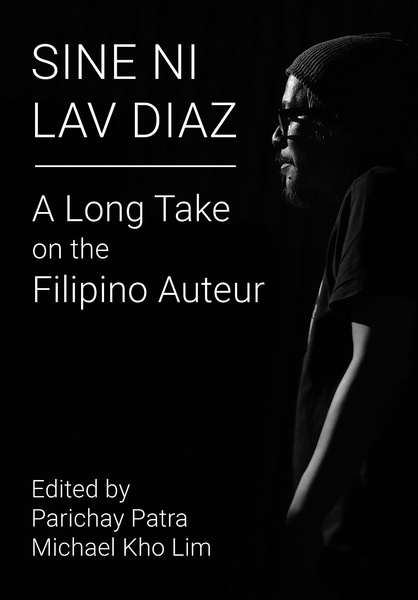Sine ni Lav Diaz (Book)
A Long Take on the Filipino Auteur
The first book-length study of the Filipino auteur Lav Diaz, this edited volume offers a nuanced overview of the filmmaker, his corpus, career and traditions from various perspectives for film enthusiasts, researchers and general readers alike. 17 b/w illus.
Edition
This original collection fills a gap in the literature on Lav Diaz, and more broadly, on slow and durational cinema. The importance of the director in contemporary world cinema is beyond doubt.
This collection considers Lav Diaz and his works holistically without being confined to a specific approach or research method. On the contrary, it involves almost all the major contemporary academic approaches to cinema. It focuses on an auteur who has been celebrated immensely in recent times and yet has remained largely unexplored in cinema studies. The book will address this research gap.
As such, this book aims to situate Diaz at the crucial juncture of ‘new’ auteurism, Filipino New Wave and transnational cinema, but it does not neglect the industrial–exhibitional coordinates of his cinema. The rationale behind this project is to raise questions on the oeuvre of a significant auteur, to situate him in and outside of his immediate national context(s), to present a repository of critical approaches on him, to reconsider the existing critical positions on him, to find newer avenues to enter (and exit) his canon that will consciously avoid the time-worn rhetoric of long take and slowness of the proverbial ‘slow cinema’ camp and to find corridors in him that will lead to informed ways of reaching other movements/auteurs in other times, other places.
It explores various other aspects of Diaz and his cinema whose notoriety, the editors believe, should not rely solely on its incredible running time. The collection looks at Diaz from the perspectives of a national and a transnational critic – one of the two editors is from the Philippines, the other from another Asian location. It concentrates both on the spatial and the temporal, to place him within the intricacies of the culture and creative industries and the distribution practices and politics in his native place, to allow space for his ‘detractors’ who (perhaps rightly) focus on and object to his ‘artlessness’, and also to read him in the context of his fascination for the epic novel and novelistic cinema, his engagement with Dostoevsky and Jose Rizal, among others.
This is the first book-length study on the Filipino auteur Lav Diaz. It looks critically at his career and corpus from various perspectives, with contributions from cinema studies researchers, film critics, festival programmers and artists. It offers a nuanced overview of the filmmaker and the cinematic traditions he belongs to for film enthusiasts, researchers and general readers alike.
Primary readership will be researchers, scholars, educators and students in film studies. Also academics and researchers interested and working in cultural studies and Philippine studies.
Parichay Patra teaches cinema at the Indian Institute of Technology Jodhpur. His previous publications include Salaam Bollywood: Representations and Interpretations (Routledge, 2016, co-edited with Vikrant Kishore and Amit Sarwal).
Michael Kho Lim is lecturer of media and cultural policy at Cardiff University. He is the author of Philippine Cinema and the Cultural Economy of Distribution (Palgrave, 2019).
Foreword
Clodualdo del Mundo Jr.
Preface
Acknowledgements
- Introduction
Parichay Patra and Michael Kho Lim
- Lav Diaz through cinematic histories
a) After Brocka: Situating Lav Diaz in Philippine cinema
Clodualdo del Mundo, Jr.
b) Homeward hill: Messianic redemption in Diaz and Dostoevsky
Tom Paulus
c) Long walk to life: The cinema of Lav Diaz
May Adadol Ingawanji
d) Freedom is a long shot: A chronicle of Lav Diaz’s artistic struggle
Michael Guarneri - From death to the gods: The resurrection of the national?
a) Never, always and already Saved: Soteriology in Century of Birthing (2011); Florentina Hubaldo, CTE (2012); and Norte, the End of History (2013)
Marco Grosoli
b) The idyllic chronotope and spatial justice in Lav Diaz’s Melancholia
Katrina Macapagal - No cinema, no art either
a) How do you solve a problem like Lav Diaz?: Debating Norte, the End of History
Adrian Martin
b) Evolution of a Filipino Family and/as non-cinema
William Brown
c) Jesus, Magdalene and the Filipino Judas: Lav Diaz and his ‘artless’ epics
Parichay Patra
d) Distributing the cinema of Lav Diaz
Michael Kho Lim
- Interview with Lav Diaz
A Lav affair with cinema
- Tribute
Indictment and empowerment of the individual: The modern cinema of Lav Diaz
Alexis Tioseco
'[Sine ni Lav Diaz] contains ten chapters, which are complemented by an in-depth interview conducted by the book’s editors with Diaz and a reprinted tribute to the director’s work by the late film critic Alexis Tioseco. [...] Sine ni Lav Diaz is a good collection of works on the Filipino director with a rather broad mix of tones and styles. The editors provide material that is of interest to academic readers as well as the general public.'
'The volume poses a methodological quandary about how to study Diaz as a global auteur. [...] The task this volume undertakes is neither one of specificity (what specifically marks Diaz as distinctly Filipino), nor as similative (that he enfolds the multiple genealogies mentioned above). What the contributors appear to present are a set of frictions and fissures that surface when theorizing about Diaz as a global auteur, and sometimes, the impossibility thereof.
Most significantly, the book encourages us to rethink the auteur beyond a positive, additive or comparative vein, and offers in its stead, negativity, lacunae and failing as a space from which to begin auteurial enquiry. The volume begins where a film ends. “Sine ni Lav Diaz” offers us the signature as ever-expanding, challenges a notional site to imagine who, what and where Diaz might be, and even expounds what the aporias and limits of theorizing Diaz are. For us, Diaz exists, only to be slowly chiselled away.'








